Prøve GULL - Gratis
An Introduction To ‘Biologicals' In Gardening
The Gardener
|August 2019
Gardening is biology, revolving around the biological processes of growth and life. For millions of years, plants have thrived and grown successfully with no human intervention.
-

Chemical pest control and plant nutrition have become the norm over the past 80 years, though, with many negative side effects recently emerging. The good news is that new natural innovations, offering a long-term holistic alternative, are now emerging – ‘biologicals’.
A biological approach centres around nature, embracing the synergistic relationships that occur naturally to ensure survival and sustainability. As gardeners we have been taught to view bacteria as germs, fungi as diseases, and insects and weeds as pests. However, the scientific truth is that many of these critters are beneficial, even essential, to healthy plant growth and development. When there is an excess of one pest species it is often an indication that the natural balance has been disturbed and an indication of vulnerability.
Natural biological control takes place continuously, in its own unique way, within every ecosystem. Using a garden as an example, biological pest control would include everything from birds feeding on grubs to owls catching rats, to ladybirds keeping aphids under control, or parasitic wasps laying their eggs on caterpillars. Even competitor plants such as alien invasives influence the ecosystem of a garden. Finally, gardeners need to be aware that there are good pathogens – beneficial bacteria, fungi and viruses that feed on microbes and insects. There are also bacteria that are good for the soil, as probiotics are good for your stomach.
Denne historien er fra August 2019-utgaven av The Gardener.
Abonner på Magzter GOLD for å få tilgang til tusenvis av kuraterte premiumhistorier og over 9000 magasiner og aviser.
Allerede abonnent? Logg på
FLERE HISTORIER FRA The Gardener

The Gardener
Preserving apples
The end of the apple season means that apples need to be preserved for the next six months until the next harvest is ready.
3 mins
July/August 2025
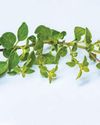
The Gardener
Golden Oregano
Origanum vulgare ‘Aureum’, as its name suggests, is golden yellow in full sun and cool weather. These bright herbs are highly fragrant, with a classic oregano taste and aroma, and are often used in the kitchen for pasta and pizza. In summer, the yellow leaves will be covered with small pink and purple flowers.
1 min
July/August 2025
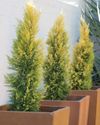
The Gardener
Potting up a conifer
Conifers generally are well-behaved plants with interesting, evergreen foliage and mostly formal and neat growth habits. This makes them stately candidates for roomy containers.
1 mins
July/August 2025
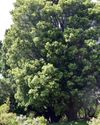
The Gardener
Enduring and venerable trees
There cannot ever be a good reason not to plant a tree, and somewhere there is just the right tree for you...
3 mins
July/August 2025
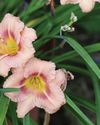
The Gardener
Daylilies make a comeback
Daylilies are making a comeback in 2025 with even more shapes, twists, ruffles, pleats, picotees, curves, and stunning colours and colour combinations. There are singles and doubles, big and small flowers, each unique, and yes, they only last a day! They do, however, have another flower bud just behind that one, ready to show off the next day.
1 min
July/August 2025
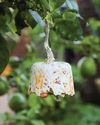
The Gardener
How to make a fat ball
Some birds love a fat ball in winter to boost their energy levels. These are easy to make and a fun project to do with the kids.
1 min
July/August 2025
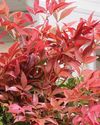
The Gardener
The Princess and Obsession
It only takes two wonderful modern hybrids of old garden favourites to prepare a garden and containers for an unforgettable spring performance.
1 mins
July/August 2025
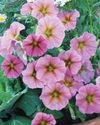
The Gardener
Pink and pretty
Pink colour shifters with hot appeal...
2 mins
July/August 2025

The Gardener
GROW the WALL
If you want lots of flowers in plantable concrete retaining wall blocks or lush stems and foliage cascading over dry stone walls, we have good plant suggestions for you!
5 mins
July/August 2025

The Gardener
Winter indoor plant care
Winter can be a tough time for your houseplants; a drop in natural light, drier air, and cold drafts can all influence their lush appeal. As plant lovers, spending more time indoors in winter creates opportunities to keep a close eye on your leafy companions and make some changes to avoid these common winter blues.
1 min
July/August 2025
Translate
Change font size

